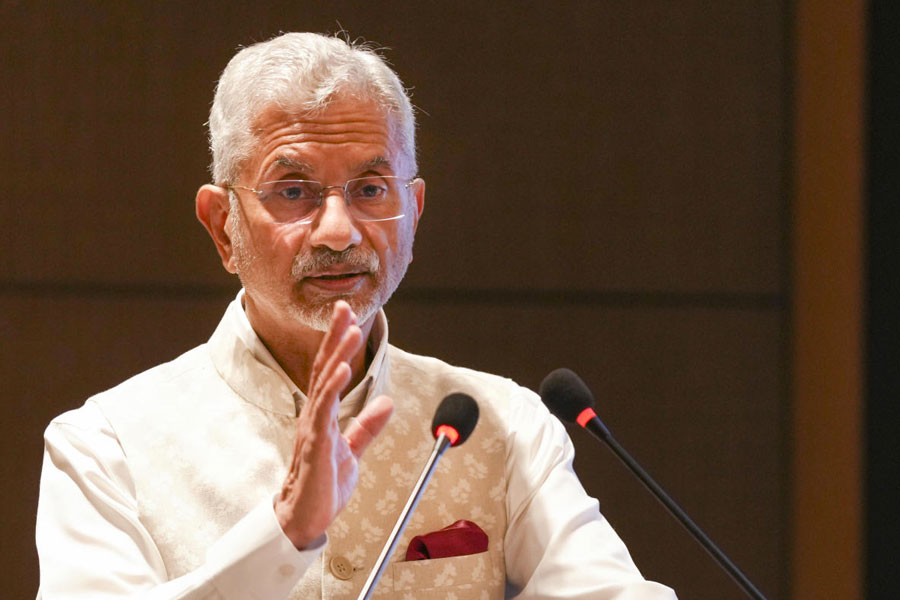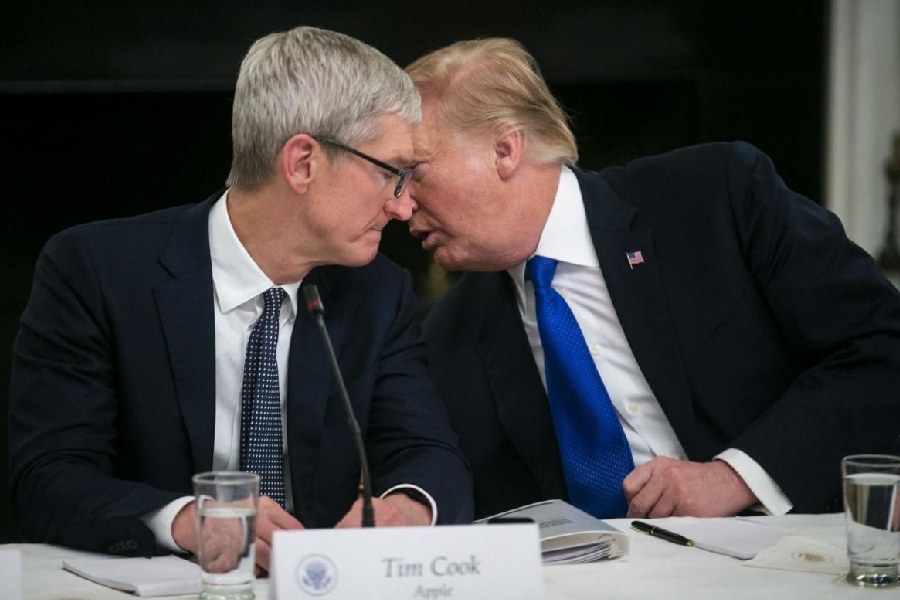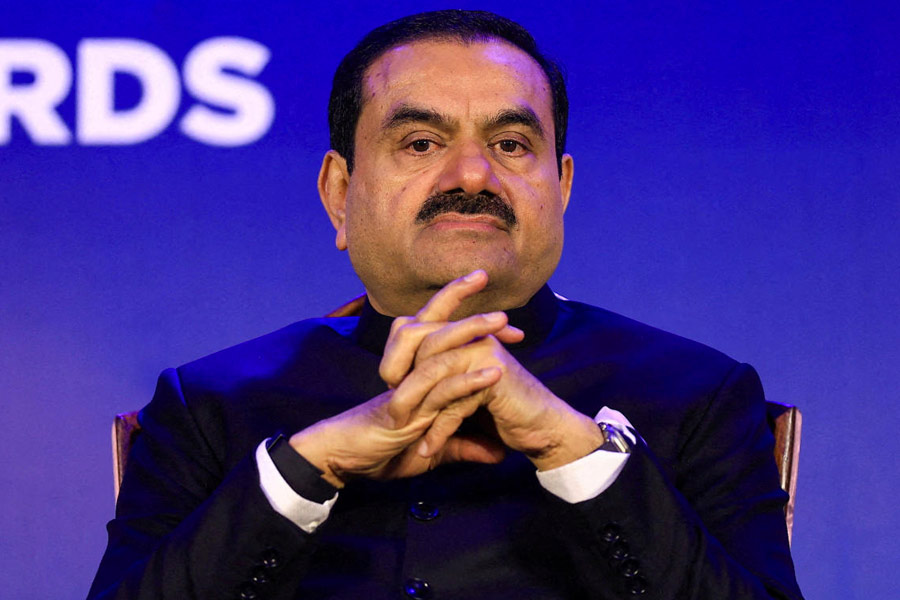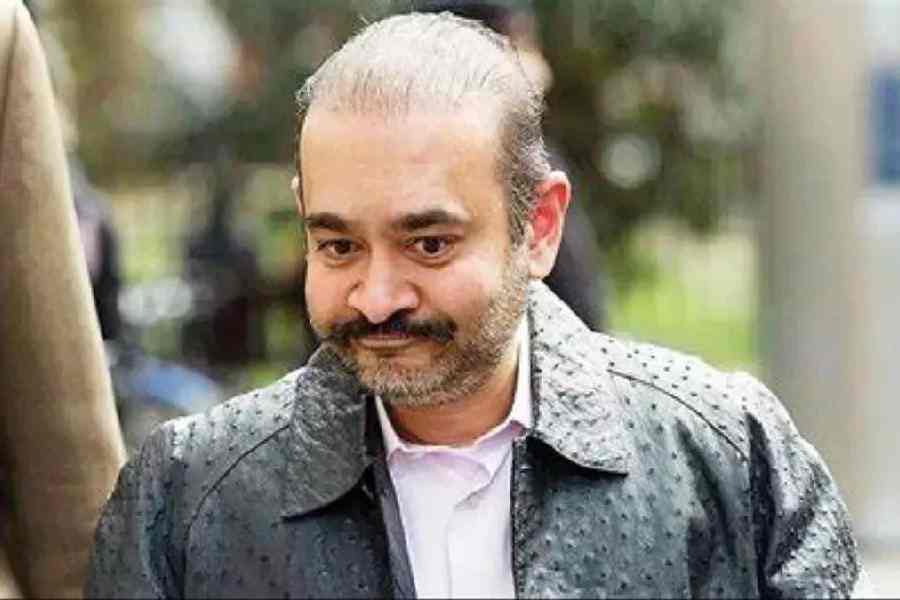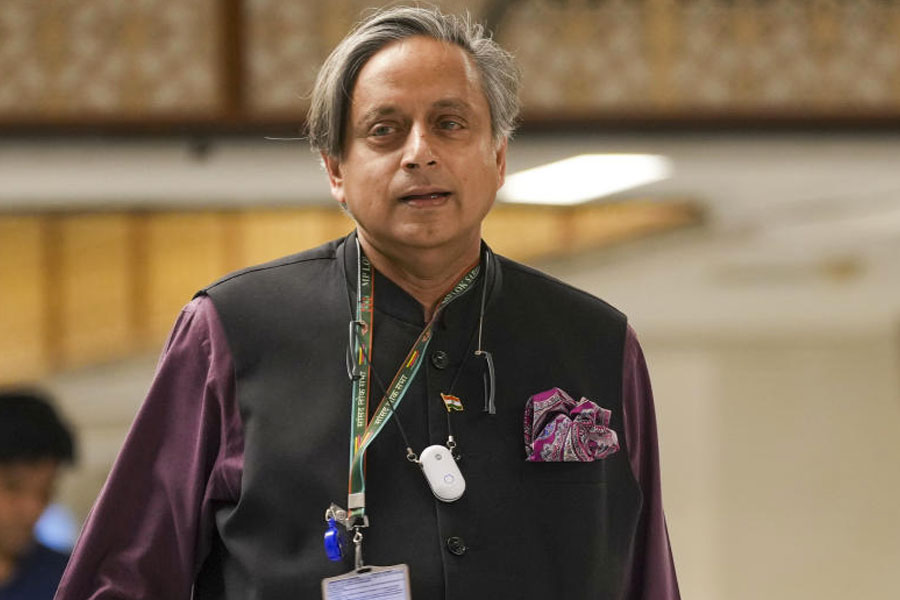
Picture: Shuvo Roychaudhury
When people first look at me, they think I am Bengali… but when I start talking, they figure I am not. I think I have the blood of Bengal without eating rice and fish!” says Ashwiny Iyer Tiwari, who has helmed two critically acclaimed films, Nil Battey Sannata and Bareilly Ki Barfi, which were also box-office successes. A former advertising art director, the 40-year-old mother of two is married to filmmaker Nitesh Tiwari, who directed Aamir Khan’s mammoth hit Dangal. And when Ashwiny says she’s “almost Bengali”, she has a tattoo — in Bangla — on her forearm to support her claim. What does the tattoo have? The names of her twin kids Amarisa and Aradhya and husband Nitesh.
In town recently, Ashwiny chatted with t2 on films and food, motherhood and travel over a 40-minute fun chat.
Why did you decide to get a tattoo in Bangla?
Because I really love Bengali literature! And, of course, the films… (Satyajit) Ray and Basu Chatterjee. A lot of people compared Bareilly Ki Barfi to Basu Chatterjee’s films. What ties all Bengali directors — even those like Hrishida (Hrishikesh Mukherjee) who made films in Hindi — was that they told their stories from the soul. They spoke about real people and real situations. I also feel a connection to Satyajit Ray because he came from advertising and I was an art director.
I also wear a lot of Bengali saris and love Bengali food. By mistake I think I was born a south Indian!
Which is exactly what Vidya Balan says!
Yes! Vidya and I have had conversations regarding this! Ab toh main Bengali seekhne waali hoon.
Your first film Nil Battey Sannata turned two on April 22. Though you’ve made another film after that, does it still seem a little surreal?
It does. The idea was always to do films from the heart. The soul had to be there in everything, which I think was there completely in Nil Battey Sannata (starring Swara Bhasker and Ratna Pathak Shah).
I feel I would never be able to make a Nil Battey Sannata again… bring in that same level of purity and innocence.
It’s a film that speaks about the lowest common denominator and yet was appreciated by every class of society because it was so relatable. It said that no matter who you are, you have the right to dream. I feel very proud that Nil Battey Sannata was my first film. It was a story about women, but even the men spoke about it.
Calm and composed or emotionally all over the place — what kind of a director are you on set?
I am very controlled on set. But by now everyone on my set knows that I have a slight OCD issue. If I am looking at my lead actor, I need to assure that the colour of the outfit of the person behind also has to be correct. I remember Ayushmann (Khurrana, who acted in Bareilly Ki Barfi) telling me, ‘Arre, main toh yahan khada hoon. Tumhein jo peechhey khada hai uske kapdon se kya matlab?!’ (Laughs) But people who work with me also know that I don’t leave anything to chance. I prep whatever I have to shoot for the day, but after that, I could be impulsive too. Also, by the time my film ends, I become very close to my actors.
Apart from the small-town milieu, what ties both your films is that they have flawed characters that are relatable. Do you gravitate towards writing such characters?
Yes. You are the first person in so many years who has told me that my characters are flawed… and I couldn’t agree more! I remember Woody Allen saying that only if your characters are flawed, do you end up getting the real aspects out of them.
I do a lot of research on my characters, and that’s something advertising has helped me with. In advertising, you literally tear apart the demographics of your target group and know them for the people they are. In Bareilly Ki Barfi, I made Bitti (played by Kriti Sanon), a small-town girl who’s led a sheltered life but has a mind of her own. Nil Battey Sannata spoke about a lower middle-class family, but I never made them unhappy.
Both your films have had strong central women characters. Do you think, in our cinema now, women are getting to do more interesting stuff than the men?
I think it’s reflective of the times we live in. When we were kids, there were strong women-centric films like Mother India and Mirch Masala because women were strong then… we had a female prime minister (Indira Gandhi). Then things changed and women stopped being the focus. Now again, women are at the forefront. Women are breaking the glass ceiling, flying into space, we now have women being allowed to fly fighter planes. Advertising now talks mostly to women because of the number of ‘women’ brands that are coming in. We have women in the top offices of the world, like Sheryl Sandberg (COO of Facebook). Our films are just reflecting that.
Despite many women coming forward to tell stories, you are one of the few female filmmakers in Bollywood. What will it take for more women to start working in the technical departments of filmmaking?
A lot of the big producers in the industry are now women, whether it’s independent production houses or studios. Now we also have some women cinematographers… I saw some women gaffers the other day. I saw a woman in the grip department. Most of the first ADs are women. On any set, at any time, there are lots of women now, if you count stylists and hair and make-up people. Also, so many colleges now have filmmaking courses that have encouraged women to get into the field.

What are you working on next?
I am working on three things now. I am writing something on kabaddi that I will announce soon. Then I will be co-producing with Ekta (Kapoor) and then I am doing something with Phantom Films. I am writing all the scripts simultaneously!
Your Instagram game is very strong. All the posts — travel to food to nature — tell a story…
Oh, I love nature… and most of my pictures are of nature. Honestly, I never realised people were noticing my Instagram posts till recently. For me, Instagram is a memory catalogue. I catalogue whatever I see of nature and of my travel. I am also very interested in the textiles of various parts of the country. I try and pay tribute to that through my Instagram posts.
You have a Facebook page called ‘No Makeup Story’. What’s the story behind that?
It’s a page that documents the ethnography of people across the places wherever I have travelled. I have now taken that further on Instagram with #NoMakeupFoodStory that showcases my love for food and #NoMakeUpBooksStory that chronicles the books I read and love. So basically it’s about things in life that I capture as they are — without any make-up or filters.
You document a lot of your travel…
I recently went to the Northeast with my maasi and mother, who are about 60, and my children, both below 10. So it was three generations travelling together. I love animals and right from the time my children were six months old, I would take them to the jungle. Every year, I make it a point to take them to a jungle. This year it was Kaziranga.
What’s the most adventurous thing you’ve done on a trip?
Nitesh and I had gone to Ranikhet and on the morning of January 1, I woke up and took off alone and walked the mountains all alone. I went without my phone and came back after four-five hours. Nitesh was worried sick! (Laughs) But yes, I love travelling solo. And I have done a lot of that before I had my kids… and sometimes even now.

Your sari style always makes it to the fashion blogs. What does fashion mean to you?
I always used to wear saris. I haven’t tried to be something that I’m not. We all belong to middle-class families and we should just be who we are. I just don’t think we need to ape anyone. For me, fashion is all about being yourself. Also, one doesn’t need to spend a lot of money to be presentable.
What are you currently reading?
I just picked up a book on crime fiction. But otherwise, I am reading a lot on yogic science. I think 40s is catching up with me… so I am reading stuff like yoga, the true meaning of Buddhism… I am also reading something on tantra.
You also have a keen interest in organic farming…
Yes. My dream is to live in a jungle some day. We stay in a small row house in Chembur in Bombay. I don’t stay in the so-called Bollywood suburbs. I grow my vegetables there. Eventually, I plan to leave all this and do farming.


